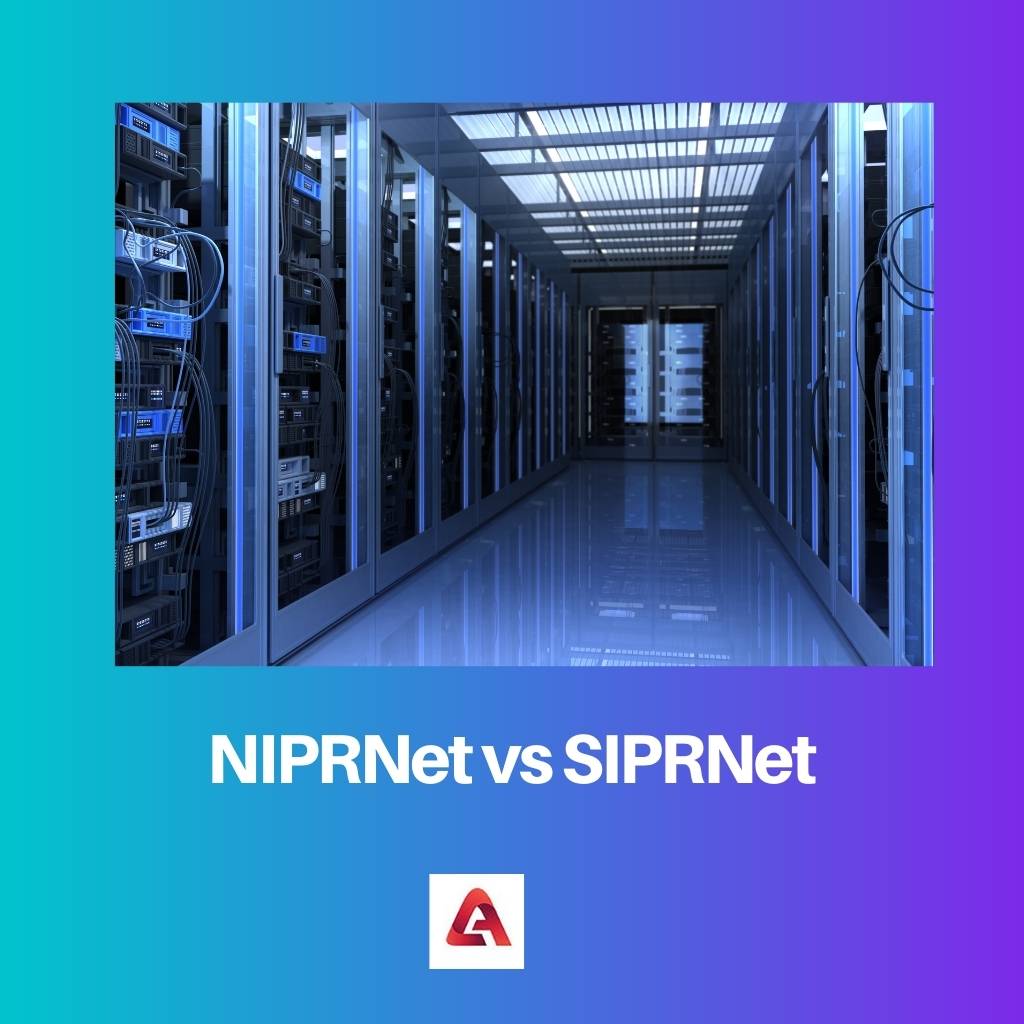The world has changed from only physical access to wholly digitalized. Everything has become digitalized, from the local vendor to the high-maintained shop owner.
Key Takeaways
- NIPRNet is an unclassified network used for non-sensitive information, while SIPRNet is classified for sensitive information.
- NIPRNet is accessible by many users, while SIPRNet has restricted access and requires a security clearance.
- NIPRNet is used for routine communication and collaboration, while SIPRNet is used for classified messaging, file sharing, and video conferencing.
NIPRNet vs SIPRNet
NIPRNet is used for non-classified communication, and SIPRNet is the Defence Information Systems Network component. The Military used NIPRNet in yesteryears; therefore, it was also known as MILnet. The SIPRNet is used by the Defence Ministry of the United States to maintain the highest possible secrecy and save the most confidential data of the country.

NIPRNet stands for the Non-Classified Internet Protocol Router Network, which is used to excess all unclassified or non-secure networks. The other name for NIPRNet is a nipper. Defence Authorities used the web.
SIPRNet stands for Secret Internet Protocol Router Network and is a significant component of the Defence Information Systems Network, which the United States Defence Department uses. This network is considered to be loop-free and maintains secrecy. The computer network connected via SIPRNet is believed to be safe and secure.
Comparison Table
| Parameters of Comparison | NIPRNet | SIPRNet |
|---|---|---|
| Full Form | Non-Classified Internet Protocol Router Network | Secret Internet Protocol Router Network. |
| Component | Other Communication Needs | It is a component of the Defence Information Systems Network. |
| Use | It is used for exchanging unclassified information. | U.S. Defence Department uses it to protect their secrecy. |
| Alternative Name | nipper | sipper |
| Capacity | 56 KB to 1 GB | 1 GB/per second to 10 GB/per second |
What is NIPRNet?
The extended form of NIPRNet is the Non-Classified Internet Protocol Router Network. The United States owns it.
The alternative name used for NIPRNet is “NIPPERnet” or nipper. This network is supposed to be very sensitive and very private.
Regular access to the Internet is also one of the uses of NIPRNet—the bandwidth capacity of the Internet Protocol service for the same ranges from 56 KB to 1 GB.
It is specially designed to secure private data. It is like a router that helps the users to access the external gateway to the Internet by filtering the data and information. It works on a wireless system and can have continuous and consistent access to the Internet.
If anyone wants to protect their anonymous data or information, they can choose the NIPRNet network for the same and will have the best Internet experience.

What is SIPRNet?
The extended form of SIPRNet is the Secret Internet Protocol Router Network. The United States also owns it along with the NIPRNet.
The alternative name given to SIPRNet is “SIPPERnet” or sipper. The nations highly prefer this network as it is considered one of the best networks to keep data confidential and safe.
SIPRNet allows its user access to a Secret Internet Protocol service, which helps provide point-to-point connectivity with the computer network. 40,000 to 50,000 people are believed to have access to the SIPRNet network.
SIPRNet provided the bandwidth capacity of Internet Protocol (IP) service ranging from 1 Gb/per second to 10 Gb/per second.
The non-classified use of SIPRNet is for sending different email conversations on a day-to-day basis. The classified service is the same for maintaining secret emails and accessing classified websites run by the Defence Intelligent Agencies.

Main Differences Between NIPRNet and SIPRNet
- NIPRNet stands for Non-Classified Internet Protocol Router Network, while SIPRNet stands for Secret Internet Protocol Router Network.
- The components of NIPRNet are that it is used for non-secure networks, and the Defence Information Systems Network uses SIPRNet.
- The primary use of NIPRNet is for exchanging unclassified information with others. In contrast, SIPRNet is majorly used by the Defence Department of the United States to maintain the secrecy and privacy level of their internal matters.
- NIPRNet and SIPRNet are alternatively known as nipper and sipper in the common language.
- The capacity of the NIPRNet to provide Internet Protocol service ranges from 56 KB to 1 GB, while the capacity of Internet Protocol services provided by the SIPRNet ranges between 1 GB/per second-10 GB/per second.
- https://apps.dtic.mil/sti/citations/ADA552290
- https://heinonline.org/HOL/LandingPage?handle=hein.journals/airfor64&div=9&id=&page=
- https://ieeexplore.ieee.org/abstract/document/4455073
- https://apps.dtic.mil/sti/citations/ADA607109

The content is well researched and presented in a very logical manner. It’s quite persuasive.
This shift from physical access to digitalization is a significant change and I think it’s very positive.
An interesting read that offers valuable insights into the digital transformation.
This article seems to be a bit biased towards NIPRNet. There should be more balanced view of both systems.
I tend to agree with you. We should always strive for a balanced perspective.
I don’t think it’s biased, it’s just presenting more details on NIPRNet.
The NIPRNet vs SIPRNet comparison could benefit from a more critical perspective, not just technical details.
That’s a valid point. A more critical analysis would provide a more well-rounded view of the subject.
It’s hard to ignore the importance of digitalization in today’s world, but the article could be more engaging in its presentation.
The details given are both fascinating and enlightening!
I couldn’t agree more! The article is packed with valuable information.
The article presents NIPRNet and SIPRNet differences in a clear and concise manner, making it easy to understand.
Yes, I appreciate how the article avoids unnecessary jargon and simplifies the concepts.
I found the comparison between NIPRNet and SIPRNet to be very informative!
Not only informative, but also well structured and well thought out.
I agree, the details and explanations on NIPRNet and SIPRNet are quite clear and insightful.
I think the content provides a comprehensive comparison between NIPRNet and SIPRNet, which is beneficial to many.